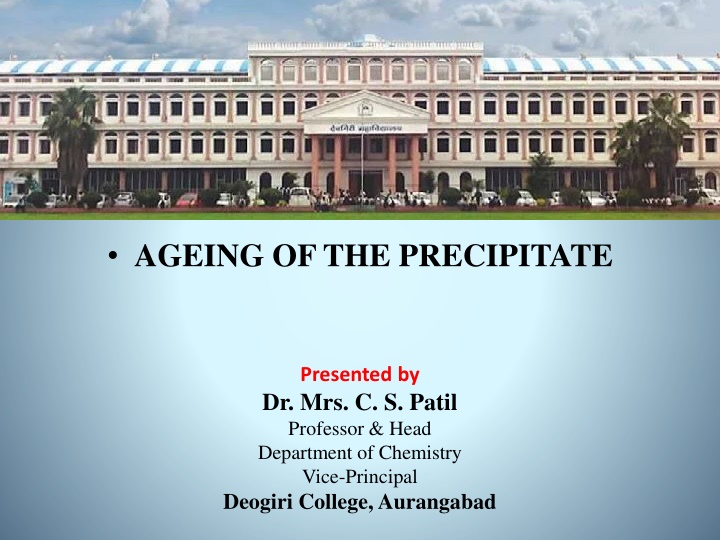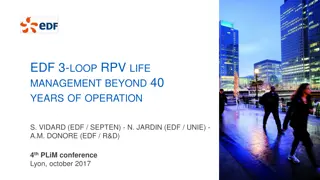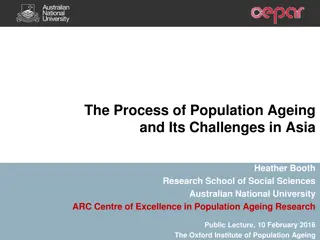
Ageing of Precipitates in Chemistry
Learn about the process of ageing of precipitates in chemistry, how smaller particles dissolve to stabilize, resulting in increased particle size. Discover how purification of precipitates is influenced by impurities and the methods to improve purity.
Download Presentation

Please find below an Image/Link to download the presentation.
The content on the website is provided AS IS for your information and personal use only. It may not be sold, licensed, or shared on other websites without obtaining consent from the author. If you encounter any issues during the download, it is possible that the publisher has removed the file from their server.
You are allowed to download the files provided on this website for personal or commercial use, subject to the condition that they are used lawfully. All files are the property of their respective owners.
The content on the website is provided AS IS for your information and personal use only. It may not be sold, licensed, or shared on other websites without obtaining consent from the author.
E N D
Presentation Transcript
AGEING OF THE PRECIPITATE Presented by Dr. Mrs. C. S. Patil Professor & Head Department of Chemistry Vice-Principal Deogiri College, Aurangabad
AGEING OF THE PRECIPITATE The primary precipitate except the slightly soluble obtained from hot dilute solution, is generally in the form of small crystalsof nearly perfect lattice structure.However those obtained from the concentrated solutions are generally either amorphous gels or very small crystals of perfect structure.There is considerable variation in particle size for any given primary precipitate,hence in both the cases the particles apply to the average crystal or particle size.
continued When such a primary precipitate remains in contact with the solution from which it is formed,normally at higher temperature, the smaller particles exhibit higher stability & dissolve.As a result, the solution concentration becomes supersaturated with respect to the larger particles.This results in the deposition of the dissolved particles on the larger particles & increase in theaverage particle size. It is known as digestion, ageing or Ostwalds ripening of the precipitate.
continued Under suitable conditions,the process ofageing also improves the perfection of the crystals lattice structure to some extent.For various reason most of the precipitates carry with them impurities from solution. During digestion these impurities to some extent returns to the solution when smaller particles dissolve. Though the problem of purification of a precipitates involves many complex variables, the process of digestion can be considered to instill, some extent of purity. Some more methods which help to improvepurity further in the precipitates are as discussed below
IMPURITIES IN THE ANALYTICAL PRECIPITATES The contamination of the precipitates by impurities is an accepted fact.But significant purity can often be achieved by, 1) The careful selection & control of the method of precipitation. 2) The application of the proper techniques in the treatment of precipitates before filtration. & 3) The washing of the precipitates may be due to i)Simutaneous Precipitation Ii)Coprecipitation Iii) Post Precipitation These effects may act separately or in combination






















